20% Off USA-Made All-Metal Greenhouse Kits until May 31
20% Off USA-Made All-Metal Greenhouse Kits until May 31
Top 5 Reasons Why You Should Build a Hoop House Style Greenhouse
April 07, 2024 8 min read 0 Comments
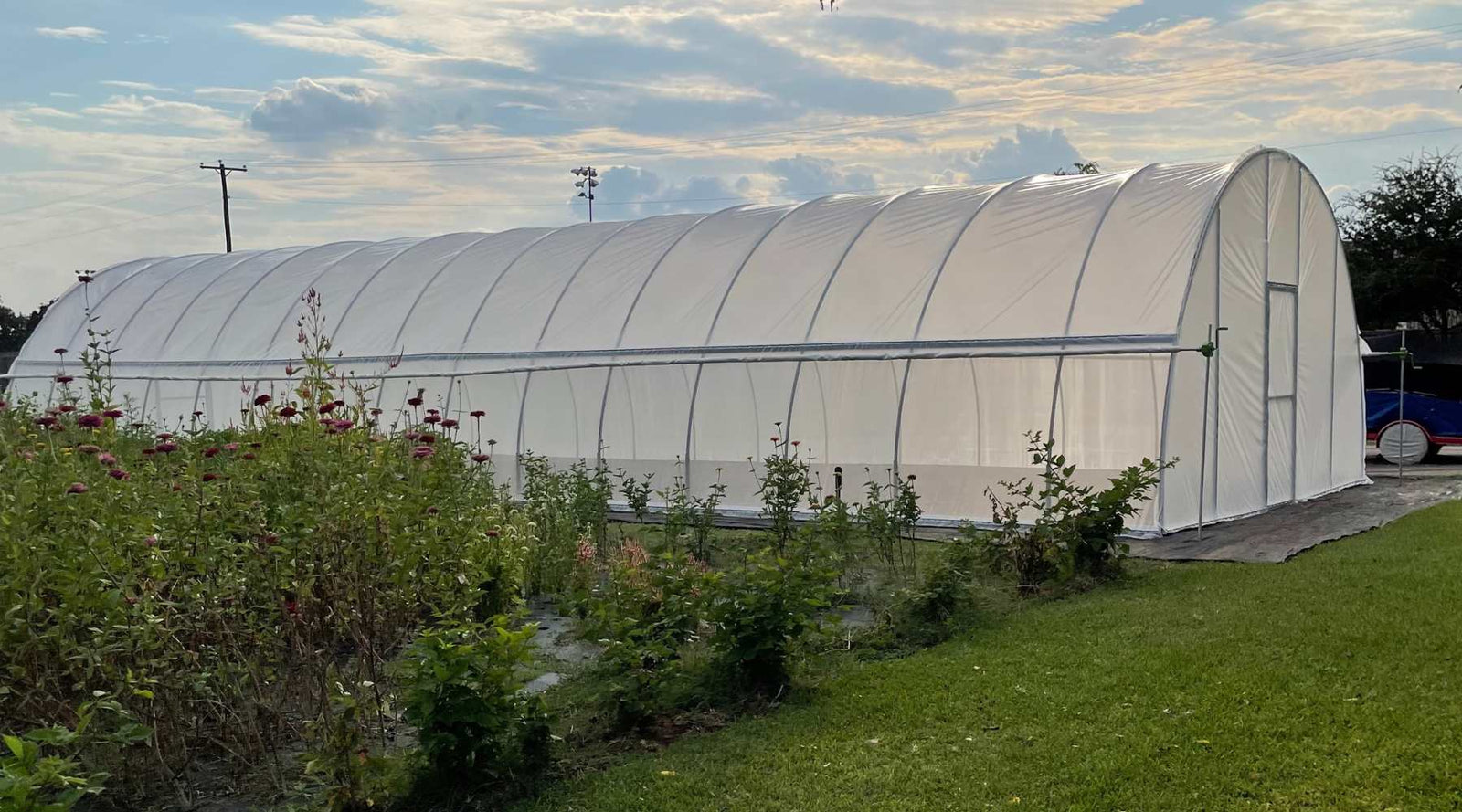
Simplicity, adaptability, opportunities for crop diversification, opportunities to extend your growing season, and ease of maintenance are our favorite things about hoop houses on the farm. Their sheer versatility allows them to be a great investment for all levels of growers. For some people a 20’x40’ greenhouse may be the biggest thing they have ever built. Others will be adding bigger hoop houses every year to their large existing farm operation.
Are you looking to expand production into a bigger, better growing space? Or are you wondering if a hoop house is worth adding to your operation? Trying to decide if this is the direction you want to take your farm? Worried about your skill level? We are here to walk you through all your options, answer many of your questions, and present you with some you may not have known to think about.
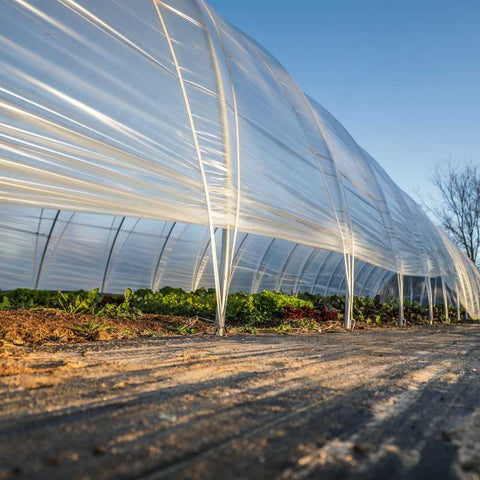
Whether it will be a little DIY high tunnel greenhouse or caterpillar tunnel as a place for propagation or an All-Metal 30’x100’ Hoop House for use as a high production space. Bootstrap Farmer has put together this brand new series to help guide you through the purchase and construction of your hoop house greenhouse. Our team has compiled all the questions we hear from first time builders and put them together in these articles and the accompanying videos to show you why you should build a hoop house and the best way to approach your new construction project.
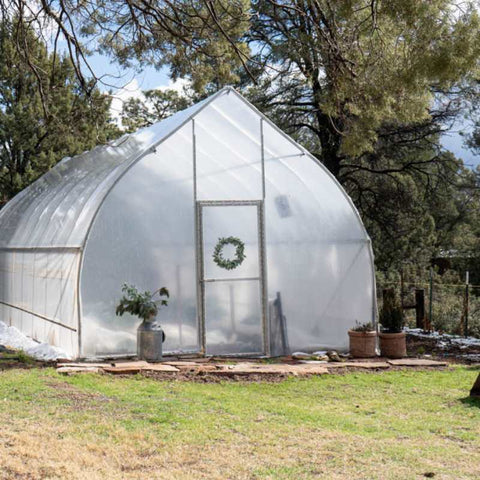
Our Greenhouse Experts are Here For You
Meet Nick and Julian. Together they have seen and heard ALL the questions when it comes to building one of these. Together with our amazing customer support we are available 7 days a week to answer your questions.
Nick is the designer of our line of Bootstrap Farmer All Metal Hoop House Kits. When he was farming full time he grew loads of tomatoes and cucumbers in the multiple hoop house style greenhouses on his farm.
Julian is our resident hoop house technical specialist and all around great builder. He uses his high tunnel as a propagation house to get a jump on the spring and as a place to overwinter fragile plants.
The Top 5 Reasons Why We Love Hoop Houses
1. Simplicity of Hoop House Construction
The central dome structure of a hoop house is simple and pretty easy to construct. When building a hoop house greenhouse from a kit they can be likened to putting together giant building blocks. Most require a limited number of basic tools and truly minimal construction experience.
Hoop houses can be built by just about anyone. The build process is essentially a limited number of steps that are repeated for each hoop that goes up and gets connected to the others. We have helped people from all walks of life be able to plan and have the confidence to build one.
It is a large structure, for some people it may be the largest thing they have ever built. It can seem a little daunting when you first read through the instructions. Just keep in mind, it is a series of simple steps that you will master as you go along. Because hoop houses are not precision builds being a half an inch off here or there will not sink you.
As you go along attaching ground posts, hoops, ridge poles, hip boards and baseboards, the structure becomes more sturdy and better lined up. By the time you put the greenhouse plastic on you will have a hoop house that can serve your farm for years to come.
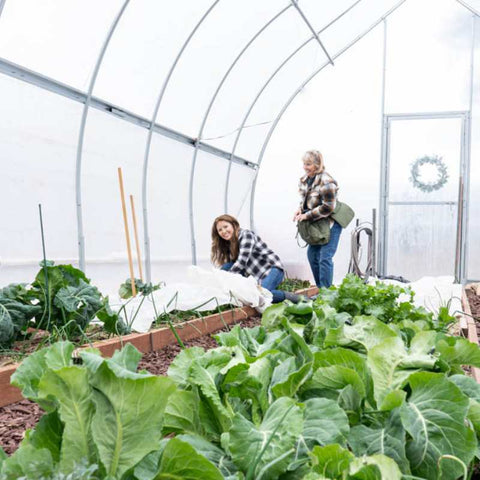
2. Adaptability of a Hoop House Structure
Depending on your needs and the needs of your farm, a well built hoop house style greenhouse:
- Can be used to grow a wide variety of crops.
- Can be used in all manner of climates, elevations, and weather events.
- Can be used with a WIDE variety of growing methods; hydroponics, dutch buckets, raised beds, grow bags, directly in ground with soil.
- Can be used as shelters for working, planting seedlings and processing harvested crops.
- Can be modified with add-ons like shade cloth to create beneficial microclimates.
- Can be used to protect livestock in inclement weather.
Hoop houses are widely adaptable structures. Here at Bootstrap Farmer we hear all the inventive ways that people are planning to use their new addition. From propagating fragile perennials to livestock protection to equipment storage, people are using hoop houses for all kinds of work.
A Note on NRCS High Tunnel Grants for Funding Your Hoop House Build.
If you are planning to use an NRCS grant though there will be restrictions on how you can grow as well as what you are allowed to do. Crops grown in an NRCS funded tunnel must be grown in ground or in raised beds no more than 12” high. NRCS grants do not allow for hoop house high tunnels to be used for livestock housing or equipment storage. This is because the program is funded by money earmarked for soil conservation and improvement. Be sure to read through the information we have gathered here on How to Apply for an NRCS High Tunnel Grant.
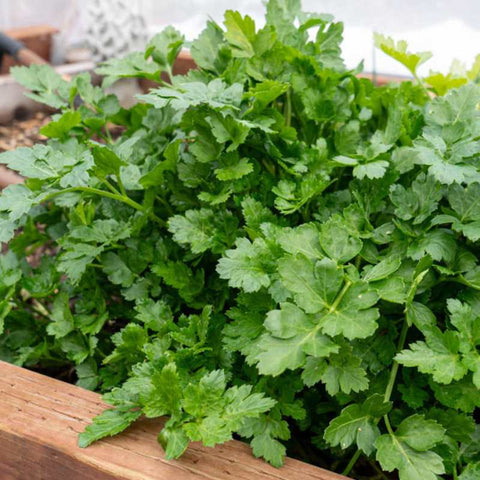
3. Opportunities for Different Crops Grown in a Hoop House
There are eight main money making food crops typically grown in high tunnels and hoop houses. They are, the mainly vegetative; leafy greens, lettuce, microgreens, and herbs. As well as the fruiting vine crops; tomatoes, cucumbers, peppers, eggplants.
Beyond these there are a few other tried and true crops that farmers have long been using to get the best return on investment for their hoop house. The growing season extension possibilities make them excellent for growing berries and aggregate fruits. You can also use hoop houses to grow potted ornamentals, succulents and specialty food crops for market. They are great for propagating plants under protection for earlier production.

Growing flowers in a hoop house
Flower farmers love the ability to get to market early with tulips for Mother’s Day, ranunculus for spring weddings, and bouquets of sweet peas for the first farmer’s market of the year. The additional heat and protection offered by a hoop house can bring your flowers into bloom 6-8 weeks earlier in the Spring and keep them blooming weeks after the first frost in Fall.
The protection from wind, rain and hail offered by a hoop house also allows farmers in less than ideal conditions to grow more delicate varieties of flowers. Being able to add insect netting to your ventilation and roll up sides will help keep your precious flowers safe from munching grasshoppers and pernicious aphids. Adding shade cloth can protect flowers from wilt and scald in high Summer extending your harvest window.
Adding some flowering crops to your growing space will help attract, feed and house beneficial insects if you will be leaving the space open sometimes. These flowers can be an added source of income and beauty at your market booth or in your salad mixes. Check out Growing Edible Flowers for more information on edible flowers.
4. Opportunities to Extend the Growing Season in a Hoop House Greenhouse
Greenhouse plastic traps and retains heat raising the temperature inside the hoop house anytime the sun is shining. This means you can plant earlier and harvest later every growing season. Protection from excess precipitation in any form lets you control irrigation.
Every growing zone comes with its own challenges and accompanying opportunities for every growing season.
Late frosts in the Spring can damage your transplanted seedlings. Seedlings in a hoop house can have weeks of precious, protected growing time added. This provides you the opportunity to be the first at your farmer’s market to have seasonal produce for sale.
Heat waves in the Summer can wilt and even kill your crops quickly. Adding shade cloth to your hoop house is easy and provides an extra layer of protection to keep your plants growing well through the hot weather. The addition of simple greenhouse ventilation systems such as circulation fans, shutter exhaust fans and fresh air intake vents can provide even more precise climate control.
Heavy rains in early Fall can bring on problems with downy mildew and other plant pathogens that thrive on excess moisture. Inside a hoop house you can control the amount of water your crops receive at every stage of growth.
Hail storms can render delicate crops unsalable. Flowers and leafy greens grown in a hoop house under greenhouse plastic are able to grow perfect leaves and petals safe from hail, wind, and heavy rain. Picture perfect crops fetch better prices from high end chefs and discerning florists.
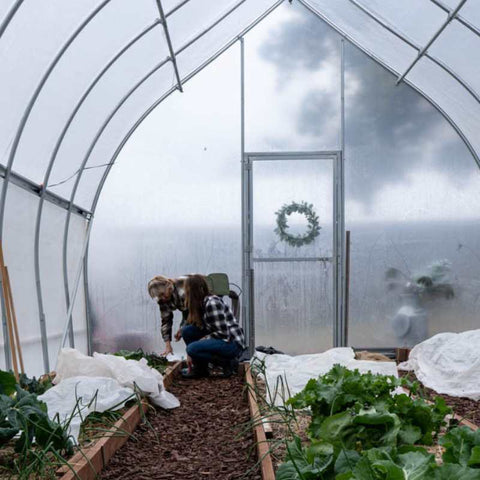
Growing year round in a hoop house or high tunnel
Even a small DIY hoop house can provide the opportunity to grow crops during all four seasons in milder climates. Having a hoop house style greenhouse as part of your farm essentially creates a whole new growing zone. For example, a crop of lettuce that may need to wait until May to be planted in growing zone 5 can be planted in the hoop house in April, bringing your production capability closer to a zone 7.
Adding a second layer of greenhouse plastic with a greenhouse air inflation kit will give you an even bigger cushion against the weather conditions outside. Adding a layer of frost cloth over your tender plants inside the hoop house will provide another 5-10 degrees of protection.
5. Hoop Houses are Easy to Maintain
Hoop houses, particularly those made of all metal, will last a long time with a few easy maintenance tasks. Keep the greenhouse plastic tight to repel water and snow. Tighten the bolts and screws yearly to keep the structure from shifting. Having a roll of greenhouse repair tape on hand to quickly patch any holes from branches or wayward tools will maintain your plastic in optimum condition.
A hoop house kit built using lock channel and spring wire can have the greenhouse plastic removed to protect it from heavy snows and high winds. If you will be funding your build with help from an NRCS grant you may be required to remove the greenhouse plastic in the Winter depending on your location.
It is also easy to add and remove a second layer of plastic or shade cloth to modify your micro climate. A well constructed hoop house style greenhouse will be easy to maintain and last for years. For more detailed information on regular maintenance tasks, check out our article on Maintaining Your Hoop House Greenhouse.
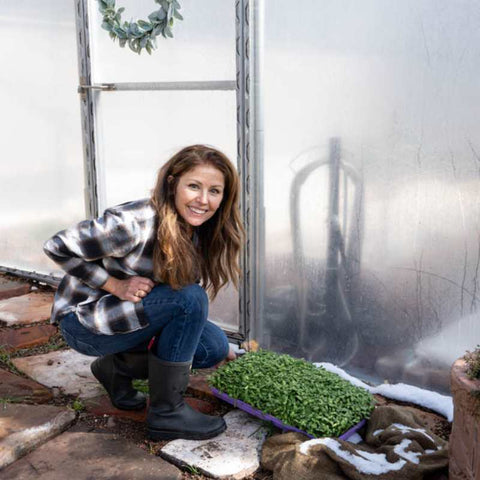
You CAN Build a Hoop House Style Greenhouse on Your Farm.
We are firm believers that just about every farm can benefit from building a greenhouse. Even if the instructions look a little intimidating for a 20’ by 100’ foot all metal kit. Even if you are working with a tight budget and building a DIY hoop house. This is a project you can accomplish with good planning, hard work, and a little help from your friends.
Much of the work required to build a hoop house kit can be done by one person. There are a few steps, like putting the greenhouse plastic on, that you will need a few extra pairs of hands to do well. As with any project many hands will make light work. You may be surprised how many people are willing to come help build your new hoop house. It is a fun project and neighbors who have been debating if they want to build one can benefit from getting to be a part of the process.
If you are wondering if you should add construction of a hoop house to your farm’s to do list, remember:
Here at Bootstrap Farmer we are all big fans of hoop house style greenhouses.
If you can think of trying to grow a crop in one of these, someone here has tried it. If you have questions about other parts of the build process, keep reading this series and check out the Hoop House 101 YouTube playlist here to catch videos of Nick and Julian as they discuss all the ins and outs of shopping, buying, shipping and building.
To get notified about our latest Hoop House video subscribe to our YouTube.
Did you think of something we haven’t covered? Have questions about a specific crop? Please reach out via email to Contact@BootstrapFarmer.com or 7 days a week on the phones (888) 406-1982.
Subscribe
Sign up to get the latest on sales, new releases and more …
